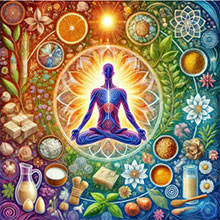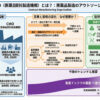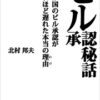Introduction to Ayurveda

Ayurveda, often called the “science of life,” is one of the world’s oldest healthcare systems, with a history spanning over 5,000 years. Rooted in natural healing methods, it harnesses plants, herbs, and minerals to restore the mind-body balance while minimizing side effects. Unlike modern medicine, which primarily treats symptoms, Ayurveda emphasizes prevention and holistic well-being. It integrates Standard Operating Procedures (SOPs) meticulously documented in Sanskrit mantras, blending scientific principles with spiritual harmony.
Ayurveda and yoga, deeply connected to Hinduism, Karma, and OM, emphasize balance and ethical living. Karma dictates that good health stems from disciplined actions, while imbalances lead to disease. Chanting OM during meditation enhances mental clarity and harmony, reinforcing Ayurveda’s holistic approach. This philosophy aligns the body, mind, and soul, making Ayurveda a spiritual and practical path to lifelong wellness.
Historical Background and Core Philosophy
Ayurveda is believed to have been revealed to sages through deep meditation and later compiled into ancient texts such as the Charaka Samhita, Sushruta Samhita, and Ashtanga Hridaya. These texts form the foundation of Ayurvedic medicine, detailing principles of health, disease, diagnosis, and treatment.
The core philosophy of Ayurveda centers on balance between the mind, body, and spirit. It aims to prevent diseases rather than just cure them, aligning with the belief that “Prevention is better than cure.” By incorporating daily meditation, yoga, disciplined food habits, and lifestyle choices, individuals can live beyond 100 years free of disease. Ayurveda treats the root cause of ailments, ensuring long-term well-being.
Fundamental Principles of Ayurveda
Ayurveda is built on core principles that guide its approach to health and healing:
1.The Five Elements (Panchamahabhutas)
Everything in the universe, including the human body, is composed of five elements—Earth (Prithvi), Water (Jala), Fire (Agni), Air (Vayu), and Ether (Akash). These elements combine to form the body’s energy forces.
2.The Three Doshas (Life Energies)
Ayurveda categorizes individuals based on their dominant doshas:
- Vata (Air + Ether): Governs movement, breathing, and circulation. Imbalance causes anxiety, dryness, and joint pain.
- Pitta (Fire + Water): Controls digestion, metabolism, and energy. Imbalance leads to inflammation, anger, and digestive issues.
- Kapha (Earth + Water): Regulates growth, stability, and lubrication. Excess Kapha results in weight gain, lethargy, and congestion.
3.Agni (Digestive Fire)
Agni represents metabolism, digestion, and nutrient absorption. A strong Agni ensures optimal health, while weak Agni leads to toxin buildup (Ama) and diseases.
Ayurvedic Practices and Therapies
Ayurveda offers various lifestyle practices and therapies to maintain health and treat ailments:
- Diet and Nutrition: Food is categorized based on taste (sweet, sour, salty, bitter, pungent, astringent) and its effects on doshas. Ayurvedic diets emphasize fresh, organic, and seasonal foods, avoiding processed items.
- Herbal Medicine: Ayurveda utilizes medicinal herbs like Ashwagandha (stress relief), Turmeric (anti-inflammatory), and Tulsi (immunity booster) in formulations to enhance their efficacy.
- Panchakarma (Detoxification): A five-step purification process that includes Vamana (vomiting), Virechana (purgation), Basti (enema), Nasya (nasal therapy), and Raktamokshana (bloodletting) to cleanse the body and restore balance.
- Yoga and Meditation: Yoga postures (Asanas) and breathing techniques (Pranayama) enhance physical and mental well-being, reducing stress and promoting longevity.
Ayurveda in Daily Life
Ayurveda is more than just a medical system; it is a way of life that integrates daily and seasonal routines to maintain balance and harmony. I have personally been connected with Ayurveda since the age of 10, and here is a compiled version of key practices:
Dinacharya (Daily Routine)
- Get at least five hours of sleep.
- Engage in moderate daily exercise (yoga, stretching, or other forms of movement).
- Practice regular meditation every day.
- Follow a vegetarian-based diet that includes dairy, fruits, vegetables, beans, and nuts while ensuring sufficient protein intake (avoid red meat).
- Eat meals at consistent times, with the largest meal at midday when digestion is at its peak.
- Prioritize home-cooked meals; avoid processed foods, outside dining, and cold beverages (opt for room-temperature water).
- Fast once a month for 24 hours to support detoxification and digestive health.
- Cultivate positive thinking, forgiveness, mindfulness, and compassion as part of daily mental well-being.
Ritucharya (Seasonal Routine)
- Adjust food and lifestyle based on seasonal influences on the doshas.
- Summer (Pitta season): Consume cooling foods (coconut, cucumber, mint).
- Winter (Kapha season): Opt for warming foods and activities to prevent lethargy.
Global Growth of Ayurveda
Ayurveda has gained worldwide recognition as an alternative healthcare system, resonating with people seeking natural and holistic solutions.
- Adoption in Western Countries: The USA, Germany, and the UK have embraced Ayurveda through wellness centers, herbal medicine, and yoga.
- Scientific Research & Recognition: Studies validate Ayurvedic remedies for conditions like arthritis, diabetes, and stress management. The World Health Organization (WHO) recognizes Ayurveda as a traditional system of medicine.
Market Growth & Future Potential
- Ayurveda’s global market was valued at $4.5 billion in 2020 and is projected to reach $14.9 billion by 2026, growing at 16.2% CAGR.
- Key Growth Drivers: • Rising demand for natural, chemical-free products. • Increasing awareness of holistic healthcare. • Government initiatives in India, USA, and Europe supporting Ayurveda.
Despite its growth, Ayurveda faces challenges such as standardization, quality control, and regulatory approvals. Research and collaborations are addressing these issues to expand Ayurveda’s global footprint.
Ayurvedic Education and Industry in India
India remains the hub of Ayurveda, with leading educational institutions and a thriving industry:
- Banaras Hindu University (BHU), Varanasi – Offers BAMS, MD/MS, and PhD programs in Ayurveda.
- Gujarat Ayurved University, Jamnagar – A pioneer in Ayurvedic education and research.
- National Institute of Ayurveda (NIA), Jaipur – Specializes in advanced training and research.
Ayurvedic Industry Leaders
Companies like Dabur, Himalaya, and Patanjali have made Ayurveda mainstream, offering herbal supplements, personal care products, and functional foods.
Conclusion: Ayurveda’s Future in Global Healthcare
As lifestyle diseases, stress, and mental health challenges continue to rise, Ayurveda offers a sustainable and preventive healthcare alternative. By bridging ancient wisdom with modern science, India has the potential to lead the global wellness movement. With its deep-rooted traditions in holistic healing, India could emerge as the world’s mindfulness hub, providing solace to those seeking meaning in an increasingly digital and distracted world.
Key Takeaways
- India’s Ayurvedic market is projected to reach $15 billion by 2030.
- Functional foods, digital Ayurveda, and herbal pharmaceuticals are the fastest-growing sectors.
- Global adoption is accelerating, particularly in the USA, Europe, and Japan.
- Collaborations with Japan’s Kanpo medicine offer new expansion opportunities.
- Ayurveda’s holistic approach is essential for managing modern lifestyle diseases.
By embracing Ayurveda, we can cultivate holistic well-being, longevity, and a healthier future for generations to come.
Profile
Pankaj Garg
CEO Innovation Thru Energy Co., Ltd, (ITE)

Pankaj Garg holds a degree in Computer Science Engineering from the National Institute of Technology and an MBA in Marketing from Fox Business School, USA. He embarked on his journey to Japan 34 years ago and, over the past 34+ years, has built a distinguished career specializing in AI, robotics, semiconductors, applied engineering, and new product invention and development. He has contributed his expertise to prestigious organizations such as Kobe Steel, Yaskawa Electric, Cirrus Logic, Intel, and NASA/Caltech startups. His broad skill set encompasses R&D, engineering, product manufacturing, and global technical sales and marketing.
Pankaj also holds over 30 patents in the areas of semiconductors, green energy, and next-generation energy, reflecting his innovative contributions to these cutting-edge industries.
Driven by a mission to tackle critical global challenges like climate change, food waste, and pharmaceutical cold chain deficiencies, Pankaj set out to create a seamless, globally standardized cold chain logistics system. After leaving Intel, he founded ITE Co., Ltd. in 2007, entirely self-funded. Today, ITE serves over 250 clients globally, with a growing presence in the Indian market. Inspired by Japan’s dedication to innovation and craftsmanship, Pankaj has fostered a culture of excellence, integrity, and continuous improvement at ITE. His guiding principles are drawn from the teachings of Karma (as outlined in the Bhagavad Gita) and Kaizen, along with his extensive global business experience, particularly in the U.S., which shape ITE’s customer-first philosophy.
Pankaj possesses deep expertise in areas such as Digital Transformation (DX), semiconductors, the food retail industry, medical cold chains, pharmaceuticals, GDP/GMP standards, life sciences, cold chain logistics value chains, Ayurveda, yoga, and the food industry. This diverse knowledge has been instrumental in his success across multiple domains, positioning him as a visionary leader in cold chain logistics, climate change initiatives, and the green energy sector. Under his leadership, ITE stands as a testament to his technical expertise, entrepreneurial spirit, and commitment to solving global challenges.
Innovation Thru Energy Co., Ltd.
Since its establishment in 2007, Innovation Thru Energy Co., Ltd. (ITE) has been a company specializing in temperature management, providing its unique IceBattery(R) System—a comprehensive cold chain logistics platform and DX solutions—to over 250 companies worldwide. All IceBattery(R) products are designed and developed in-house. The IceBattery(R) System is a revolutionary cooling system capable of maintaining uniform internal temperatures for extended periods across all modes of transportation, from 4L boxes to 40FT large containers/trucks.
For this column
Having spent over 35 years in Japan, my perspective on the country, its culture, and its people is shaped by a unique blend of an Indian heritage and deep integration into Japanese society. My family’s global ties, including my grandfather’s role as Vice Ambassador to Japan in 1959, have instilled in me a broad, inclusive worldview.
I see Japan and India as deeply complementary, with shared values and a synergistic relationship rooted in history, culture, and religion. Japan’s support for India during World War II and the spiritual connections between the two nations underscore this bond.
I believe in harnessing this synergy to create a powerful partnership where India’s global leadership and Japan’s excellence in business, manufacturing, and operational efficiency can unite. Together, we can forge a path towards a future that embodies the true essence of Buddhism and Karma—bringing peace, prosperity, and wisdom to the world as one united family.
contents
- 【Unlocking New Possibilities through Market Characteristics and Cultural Understanding in India】1.A Journey Through India’s History and Cultural Ethos Pankaj Garg – CEO Innovation Thru Energy Co., Ltd, (ITE)
- 【Unlocking New Possibilities through Market Characteristics and Cultural Understanding in India】2.India’s Strategic Alliances and Global Influence Pankaj Garg – CEO Innovation Thru Energy Co., Ltd, (ITE)
- 【Unlocking New Possibilities through Market Characteristics and Cultural Understanding in India】3.The Evolution of India’s Educational Landscape Pankaj Garg – CEO Innovation Thru Energy Co., Ltd, (ITE)
- 【Unlocking New Possibilities through Market Characteristics and Cultural Understanding in India】4.India’s Industrial Growth Since Independence: The Role of State-Owned Enterprises, Private Sector, and Overseas Collaboration Pankaj Garg – CEO Innovation Thru Energy Co., Ltd, (ITE)
- 【Unlocking New Possibilities through Market Characteristics and Cultural Understanding in India】5.India’s Healthcare System: A Comprehensive Overview Pankaj Garg – CEO Innovation Thru Energy Co., Ltd, (ITE)
- 【Unlocking New Possibilities through Market Characteristics and Cultural Understanding in India】6.Introduction to Ayurveda Pankaj Garg – CEO Innovation Thru Energy Co., Ltd, (ITE)
- 【Unlocking New Possibilities through Market Characteristics and Cultural Understanding in India】7.Ayurveda for a Healthy and Balanced Life Pankaj Garg – CEO Innovation Thru Energy Co., Ltd, (ITE)





















